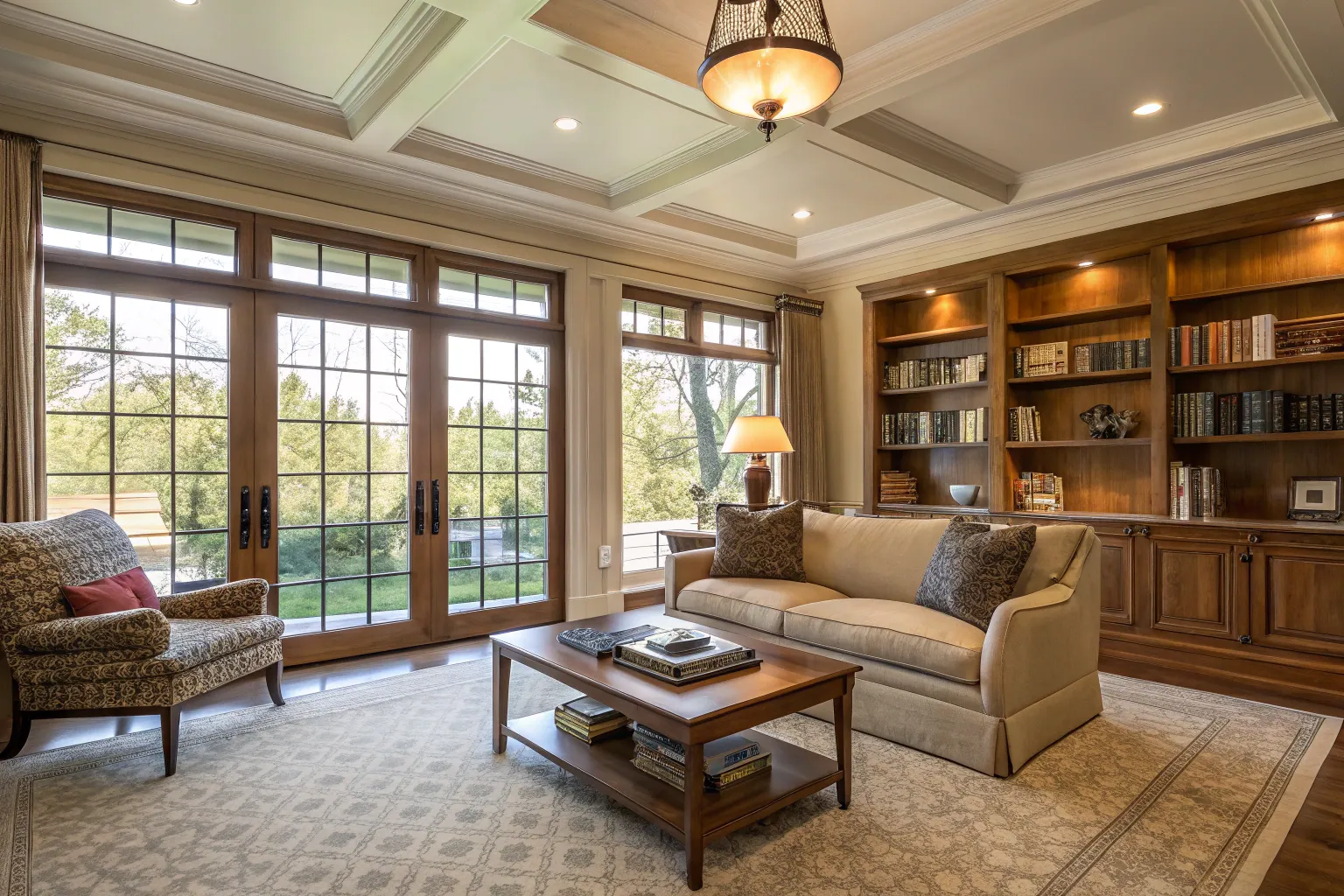In many modern homes, particularly new construction, rooms often lack the traditional architectural anchors that naturally draw the eye and organize the space. While fireplaces have historically served as the heart of a room, their absence doesn’t mean you can’t create an equally compelling focal point that brings warmth, character, and visual balance to your space.
Understanding the Psychology of Focal Points
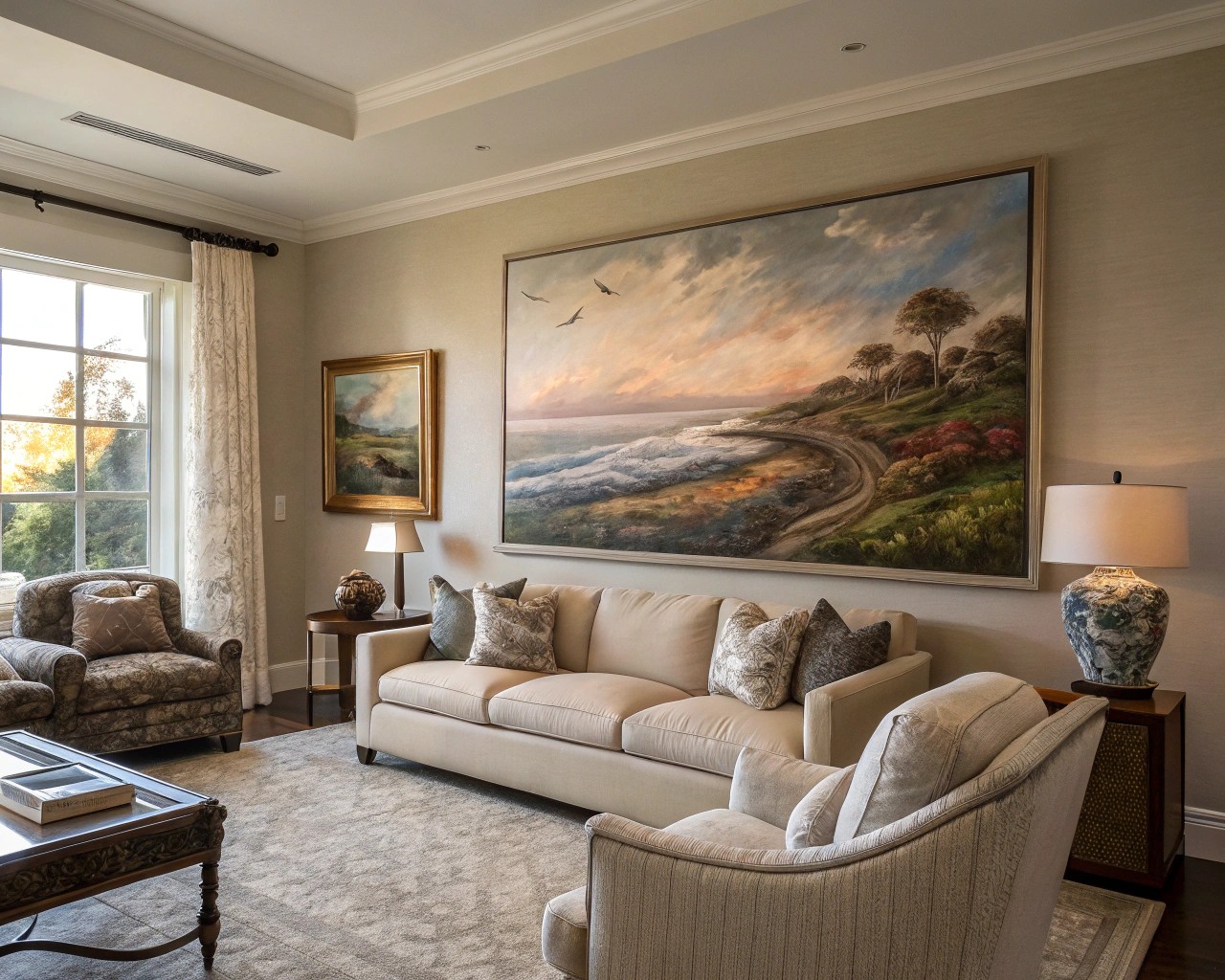
A focal point serves as more than decorative enhancement—it’s a fundamental design element that provides visual hierarchy and emotional grounding. When you enter a room, your eye instinctively seeks a dominant feature to anchor your perception of the space. Without this visual anchor, rooms can feel disjointed and chaotic, lacking the cohesive flow that makes a space feel intentional and welcoming.
The psychological impact of focal points extends beyond mere aesthetics. They create a sense of balance and well-being, directing attention while establishing the room’s mood and personality. Research in environmental psychology shows that spaces with clear focal points feel more organized and comfortable to occupants, reducing visual stress and enhancing overall satisfaction with the environment.
Strategic Approaches to Creating Focal Points
Statement Lighting as Visual Anchor
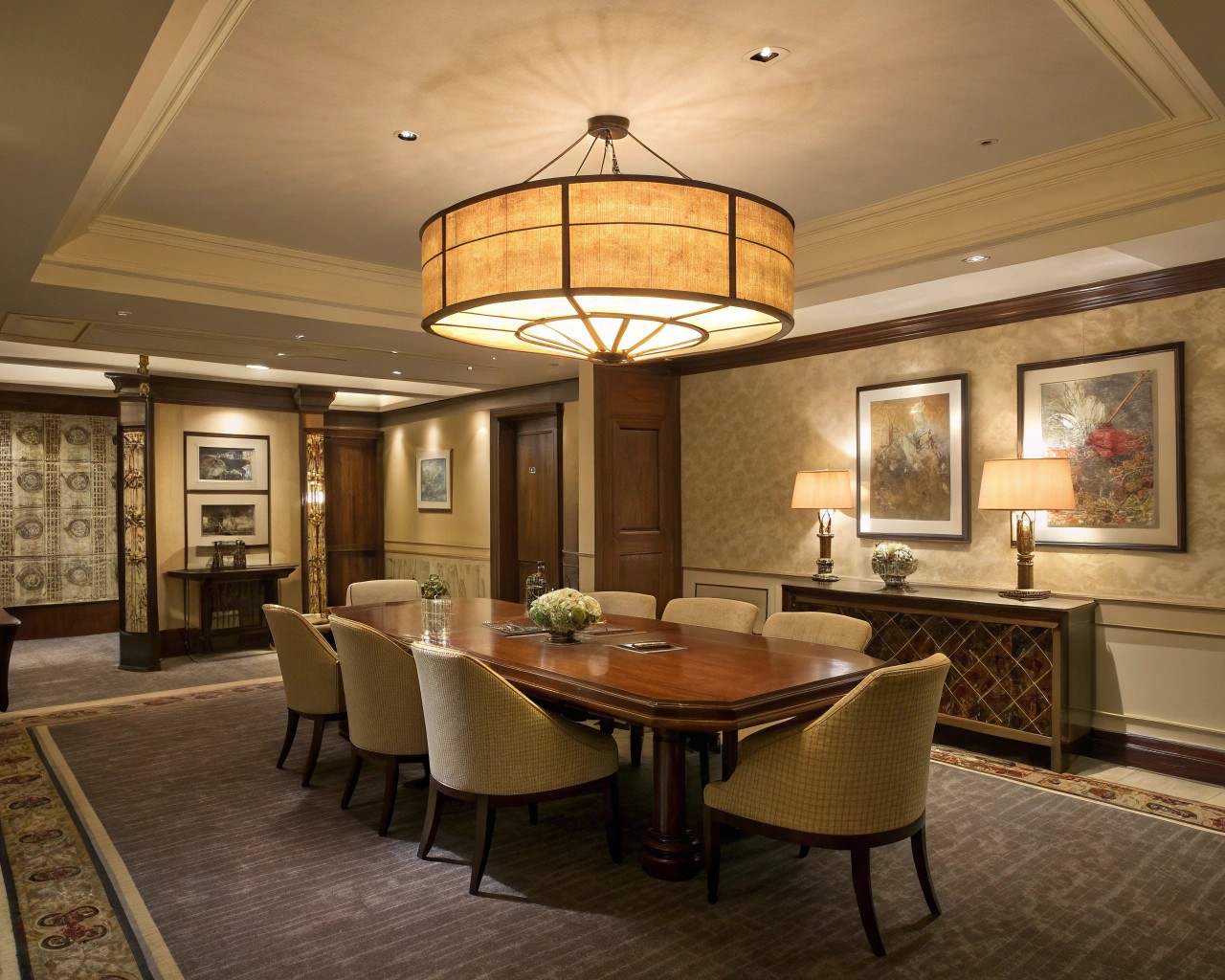
One of the most effective ways to create a dramatic focal point is through statement lighting. When you have adequate ceiling height, an oversized pendant light or chandelier can command attention and provide the visual weight traditionally supplied by a fireplace.
Key considerations for statement lighting:
- Scale the fixture to your room size—a large chandelier can overwhelm a small space
- Position it low enough to feel connected to the surrounding furniture
- Consider the room’s purpose: dining areas benefit from focused task lighting, while living rooms need ambient illumination
- Use dimmer switches to adjust the lighting for different occasions and moods
I’ve found that clients often underestimate the transformative power of a well-chosen light fixture. A sculptural pendant or dramatic chandelier instantly elevates the room’s sophistication while providing the gravitational pull that organizes furniture placement around it.
Accent Walls and Architectural Elements
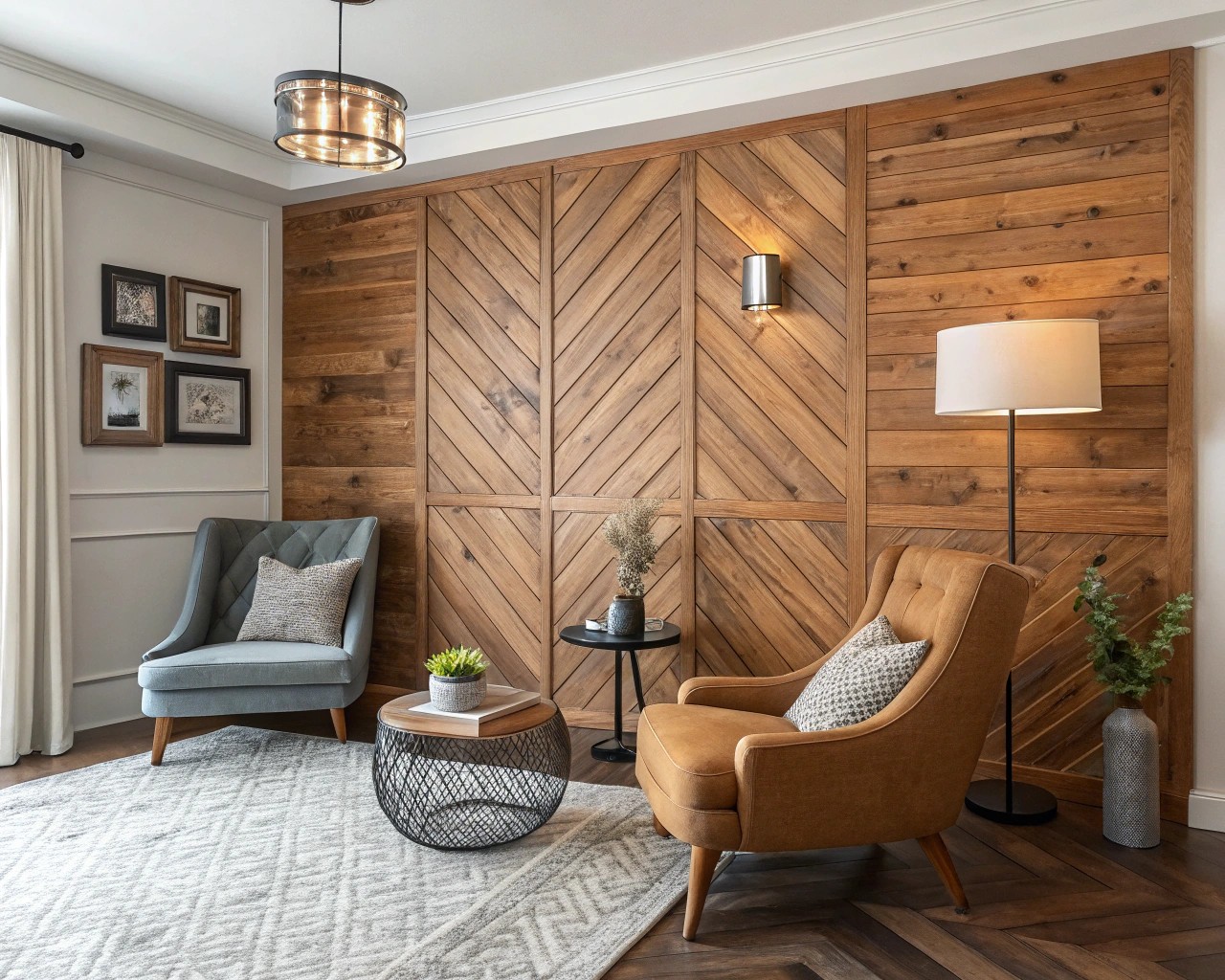
Paneling and texture offer another powerful approach to creating focal points. Shiplap, board-and-batten, or modern slatted wood can add architectural interest to an otherwise plain wall. The key is choosing a wall that’s naturally visible upon entering the room—typically the wall opposite the main entrance.
Wall treatment options include:
- Vertical shiplap for a modern twist on traditional horizontal planking
- Stone or brick veneer for textural depth
- Wood paneling in rich, moody colors
- Decorative molding patterns that create visual rhythm
Paint and color strategy can also transform a single wall into a commanding focal point. Bold accent colors work particularly well in neutral rooms, where they provide necessary visual contrast without overwhelming the space.
Furniture as the Star
Large-scale furniture pieces can successfully anchor a room when positioned strategically. A substantial sectional sofa, oversized armoire, or custom-built media unit can provide the visual weight needed to organize the space around it.
Furniture focal point strategies:
- Choose pieces with interesting silhouettes or unique materials
- Position furniture to create conversation areas that face the focal element
- Use symmetry to reinforce the importance of the chosen piece
- Consider built-in storage solutions that span entire walls for maximum impact
Gallery Walls and Artwork
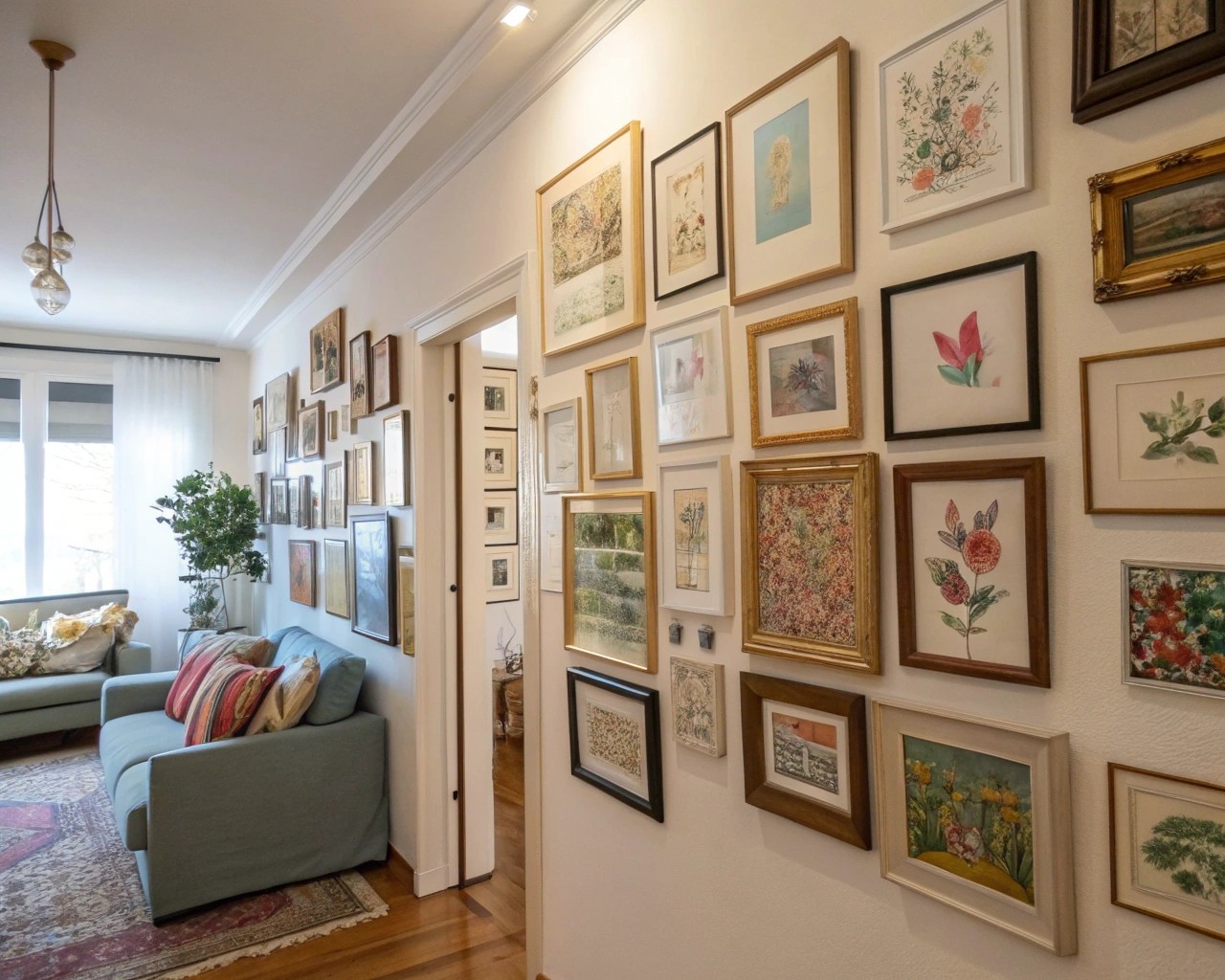
Large-scale artwork can serve as an instant focal point, particularly when scaled appropriately to the wall and surrounding furniture. A single oversized piece often creates more impact than multiple smaller works.
Gallery wall considerations:
- Start with a central anchor piece and build outward
- Maintain consistent spacing between frames (typically 2-3 inches)
- Mix sizes and orientations while maintaining visual balance
- Include personal elements alongside traditional artwork for authenticity
Plants and Natural Elements
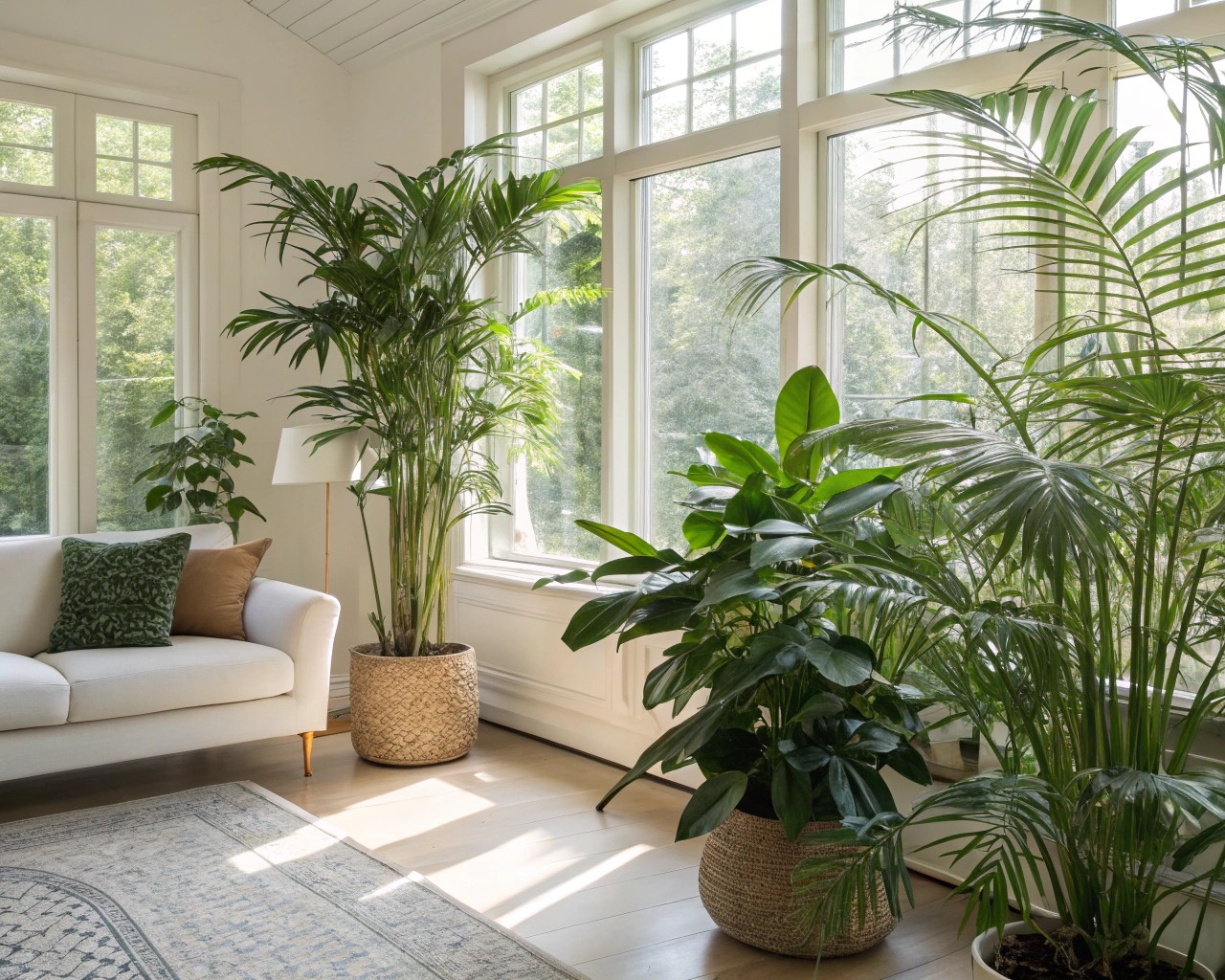
Strategic plant placement can create living focal points that bring energy and life to a room. Large statement plants like fiddle leaf figs, monstera deliciosa, or bird of paradise can command attention while improving air quality.
Plant focal point tips:
- Choose plants with dramatic foliage or architectural form
- Position tall plants in corners or beside seating areas
- Group plants in odd numbers for visual appeal
- Consider the room’s lighting conditions when selecting species
Area Rugs as Foundation Elements
A well-chosen area rug can anchor a seating area and create a defined focal zone within a larger space. Bold patterns, rich textures, or dramatic colors can draw the eye downward and establish a gathering area.
Rug focal point guidelines:
- Size the rug to accommodate at least the front legs of major furniture pieces
- Choose patterns or colors that complement but don’t compete with other elements
- Layer rugs for added visual interest and texture
- Position rugs to define specific activity zones within open floor plans
Room-Specific Applications
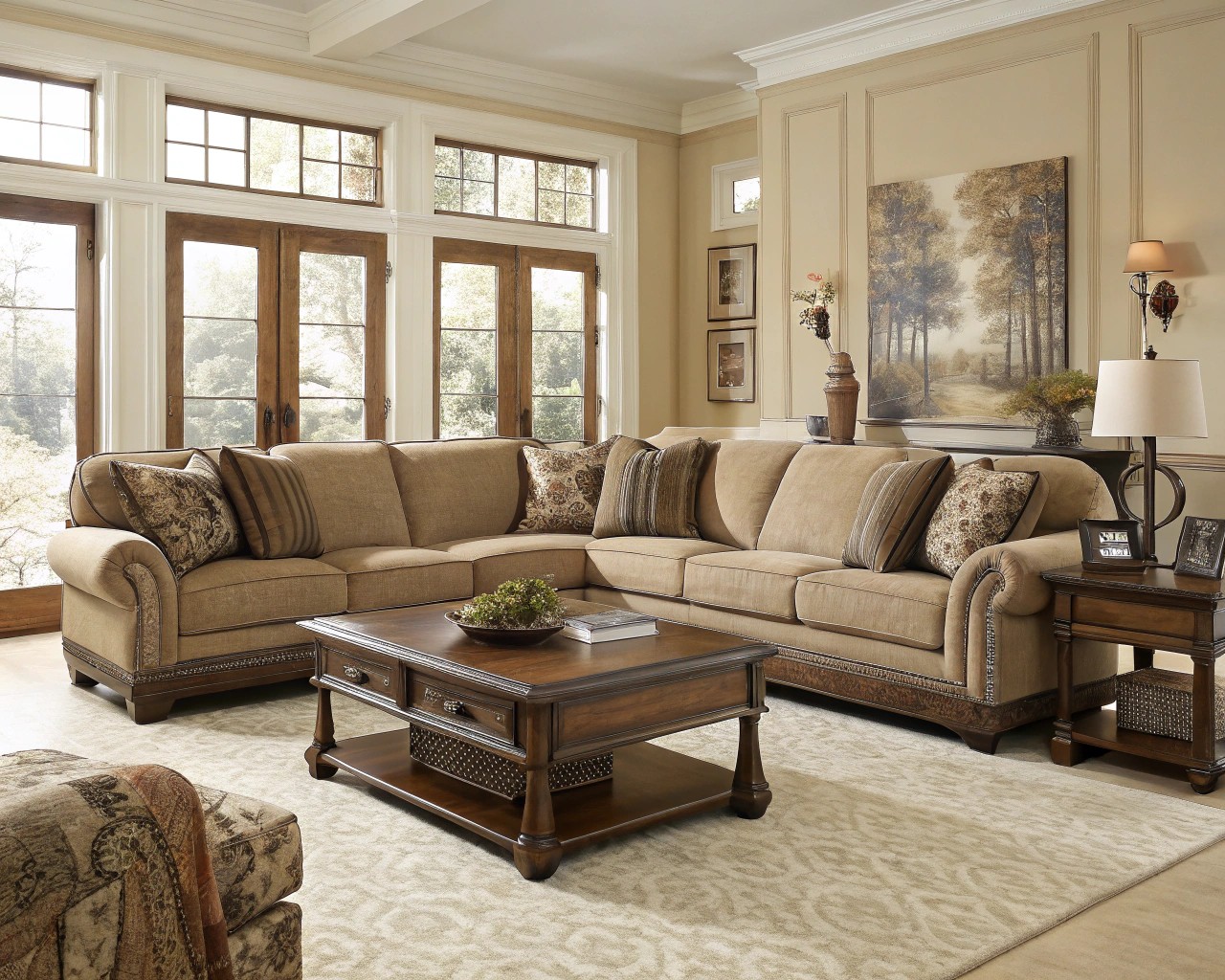
Living Rooms
In living rooms, consider your primary activities when selecting a focal point. If entertainment is central, embrace the television as a focal point by surrounding it with built-in shelving or a custom media wall. For conversation-focused spaces, arrange seating around a large coffee table or striking piece of furniture.
Bedrooms
Bedrooms benefit from calming focal points that promote rest. A dramatic headboard wall, whether created through paint, paneling, or large-scale artwork, can anchor the sleeping area while maintaining the room’s tranquil atmosphere.
Dining Rooms
Dining rooms naturally center around the table, but overhead lighting becomes crucial for creating ambiance. A statement chandelier or pendant light can define the dining area while providing necessary task lighting.
Technical Considerations
Scale and Proportion
The relationship between your focal point and the room’s dimensions is crucial. A focal point should be large enough to command attention but not so dominant that it overwhelms the space. Use the rule of thirds when positioning elements—avoid placing focal points at the exact center of walls or rooms.
Lighting Integration
Layered lighting enhances any focal point. Combine ambient, task, and accent lighting to create depth and visual interest. Accent lighting directed at your focal point should be approximately three times brighter than the surrounding ambient lighting.
Color Psychology
Consider the emotional impact of your focal point colors. Warm colors (reds, oranges, yellows) energize and stimulate, while cool colors (blues, greens, purples) calm and relax. The psychological effect of colors can significantly impact how comfortable people feel in your space.
Common Mistakes to Avoid
Competing elements: Avoid creating multiple focal points that fight for attention. One primary focal point per room maintains visual clarity and prevents chaos.
Inappropriate scale: Ensure your focal point is proportional to the room size and ceiling height. A massive chandelier in a small room or tiny artwork on a large wall both fail to create effective focal points.
Ignoring room function: Your focal point should enhance, not hinder, the room’s primary purpose. A dramatic art piece might work well in a formal living room but could be distracting in a home office.
Implementation Strategy
Phase 1: Assessment
- Identify your room’s primary function and traffic patterns
- Determine the most visible wall or area upon entering
- Consider existing architectural features that might be enhanced
Phase 2: Selection
- Choose your focal point type based on budget, style, and maintenance preferences
- Consider the room’s color palette and existing furniture
- Think about long-term flexibility and seasonal changes
Phase 3: Installation
- Plan lighting integration during the design phase
- Consider professional installation for electrical work or built-ins
- Allow for adjustment period to fine-tune placement and styling
Budget-Friendly Alternatives
Creating compelling focal points doesn’t require significant investment. Paint transformations can cost less than $50 but dramatically change a room’s character. DIY paneling using inexpensive materials like MDF or plywood can create custom looks for hundreds rather than thousands of dollars.
Thrift store finds and DIY artwork can create personal focal points that reflect your individual style while staying within budget constraints. The key is committing to a cohesive vision and executing it with attention to detail.

